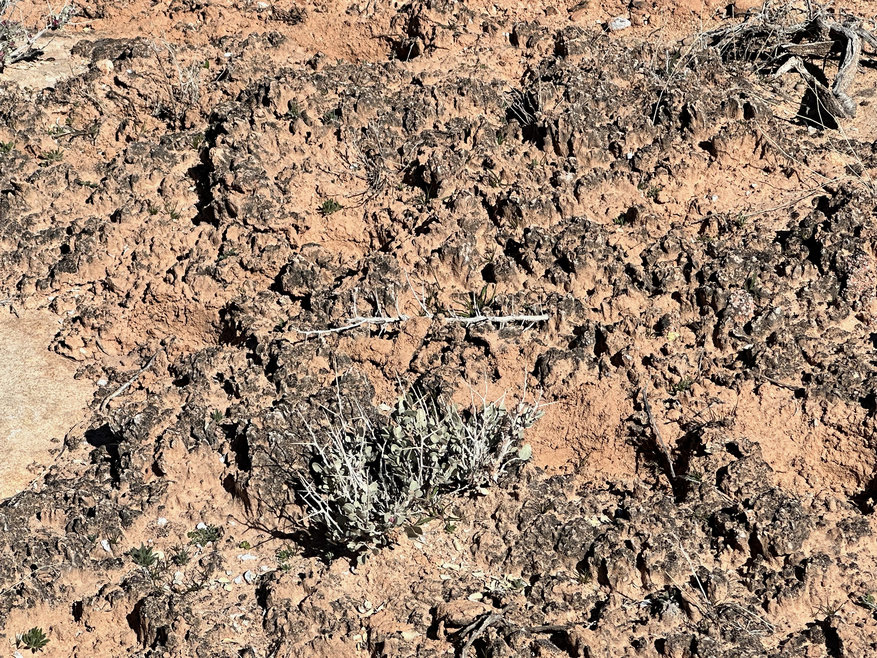By: Torque Staff
Dear Diary,
“Don’t step off of the rocks!”
As one of us crawled across a rock ledge to get a better view for the vehicle recovery below, one of the folks from Tread Lightly! yelled up with a stern warning. We had unknowingly entered into an area covered with a dark gray, almost black, crusty surface. The dark, crusty substance is called cryptobiotic crust.
Cryptobiotic crust is a living soil crust that plays a critical role in the desert ecosystems of Moab, Utah, and other desert regions. This crust is made up of a complex community of bacteria, algae, lichens, and fungi that live on the soil surface and form a dark, spongy layer.
Cryptobiotic crust is an essential member of desert ecosystems. These microbiotic organisms are some of the oldest forms of life forms known. Cyanobacteria, aka blue-green algae, have inhabited the earth for as long as life has existed. It is believed that these and similar microbiotics are the major contributors to cultivating fertile soil across the globe and originally turned earth’s early carbon dioxide-rich environment into healthy oxygen, which allowed other lifeforms to survive.
And it is everywhere in the desert surrounding Moab, Utah.
The function of this crust in the large desert regions is it helps to prevent erosion, capture, and retain moisture, and fix nitrogen in the soil. It also provides habitat and food for a variety of desert animals, including insects, rodents, and reptiles.
Cryptobiotic crust is incredibly fragile and can take decades or even centuries to form. Once disturbed either from non-indigenous animals or human encroachment, it can take years for the crust to recover, if at all. This makes it crucial to be aware of its existence. When discovered one should avoid walking, biking or driving on cryptobiotic crust, as even a single footstep can destroy years of growth.
The Bureau of Land Management has implemented strict guidelines for recreational use to protect this delicate ecosystem. Visitors and participants are encouraged to stay on designated trails and roads, avoid off-road vehicle use off the trail, and leave no trace of their visit. Organizations, such as Tread Lightly! will continue to educate and use stewardship projects to protect delicate paleontological sites and soil environments.
Visitors to Moab and other desert environments are encouraged to learn about the cryptobiotic crust and its importance to the desert and the earth. Interpretive signs and educational materials are available at many trailheads and visitor centers throughout the area.
So, diary, we definitely urge anyone taking a trip to Moab to be aware when leaving the trail because cryptobiotic crust is a vital and fragile component of the desert ecosystem. A greater understanding of its importance and taking steps to protect it, visitors can help ensure that this unique and valuable resource remains intact for future generations.
Related Articles:
Power, Electrification Mark 2023 Easter Jeep Safari Concepts





















